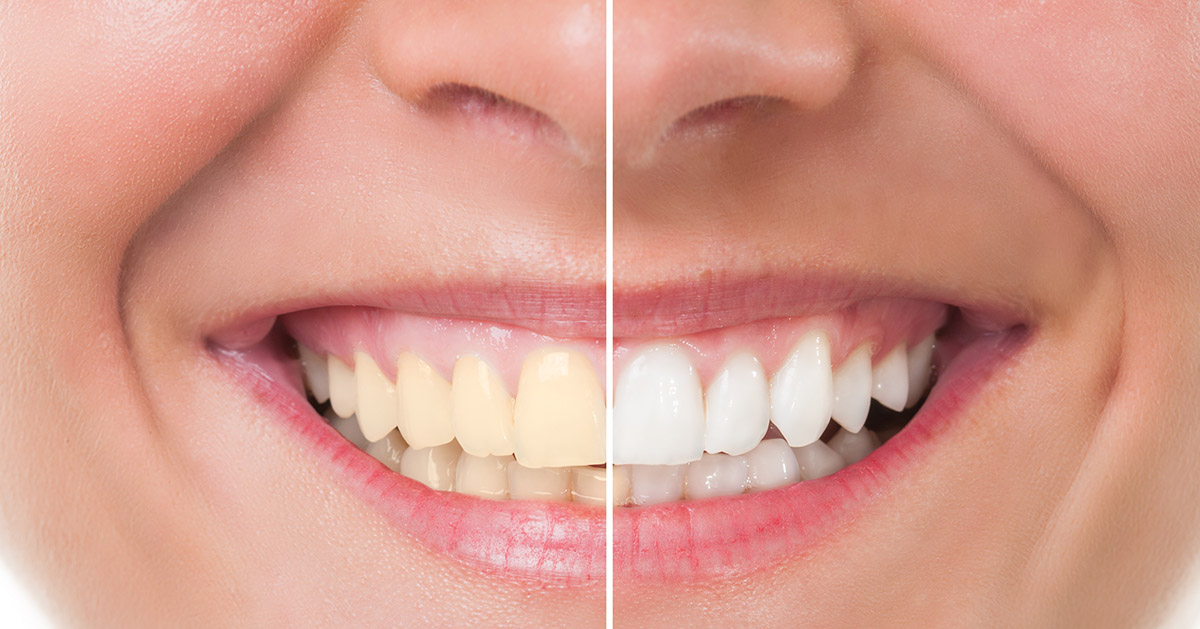
There are a few different things you can do to keep your natural smile looking it’s best. You’ve no doubt heard the expression “You are what you eat…”
Turns out, this is true, at least when it comes to the coloration of your teeth.
Because your teeth are porous, they naturally absorb the liquids that you drink. Avoid consumption of or exposure to products that are known to stain teeth, such as coffee, tea, sodas, grape or cranberry juice, popsicles, soy sauce, balsamic vinegar, tomato sauce, fruits and berries (blueberries, blackberries, cherries, pomegranates, etc.), and beets.
Making some adjustments can minimize the impact of these foods and beverages, including swishing your mouth with water after eating or drinking something (or, if practical, brushing and rinsing immediately after consuming), adding milk to coffee to lighten it’s color, choosing green tea over black tea, choosing light-colored sodas, drinking apple juice instead of grape or cranberry juice, avoiding popsicles with dark coloring, switching to light-colored or creamy sauces over deeply colored sauces, adding a lighter vinegar to salads, and adding greens like lettuce and broccoli that create a film on your teeth to prevent staining from occurring. You can also use a straw so the liquid from beverages that stain bypasses your front teeth.
Foods like beets are packed with good nutrients, but they stain everything they touch. You don’t need to skip foods high in antioxidants and vitamins that your body needs just to avoid staining teeth. Research suggests that gum disease accelerates and is potentially more severe in people with poor nutrition.
You DO want to consider eliminating sodas because of the artificial sugar and acid, which are terrible for the enamel on your teeth. Foods high in carbohydrates, sugars, and starches greatly contribute to the production of plaque acids that attack the tooth enamel. “Energy drinks” can erode enamel, so drinking water during workouts is a better alternative.
The color of a drink does not always dictate the full extent to which it can stain teeth. The dark, rich color of red wine makes it an obvious culprit, but white wine actually contains more damaging acid.
We recommend brushing your teeth at least twice daily and flossing at least once daily. Use a whitening toothpaste once a week only to remove surface stains, using your regular toothpaste the rest of the time.
Whitening may be more effective on yellowish teeth than brownish-colored teeth. Grayish-hue or purple-stained teeth present the biggest challenge. Blue-gray staining can require months of treatments. In some cases, veneers, bonding, or crowns may present a better choice than bleaching. It’s also important to note that teeth whitening is not permanent as patients may expose their brightened teeth to the same foods and beverages that stained their teeth in the first place. A touch-up treatment in 6 months or after a year or two may be needed.
Certainly! Tedford Family Dentistry helps our patients restore their gorgeous smiles with procedures such as teeth whitening, dental implants, dental veneers, cosmetic fillings, and contouring the shape of teeth.
Our professionally applied products meet ADA guidelines for safety and effectiveness. The first step to ensuring safe and effective us is a professional consultation. Call us at (423) 238-8887 to arrange a cosmetic dental appointment at our office at 9380 Bradmore Lane, Suite 108, Ooltewah TN 37363.
Photo: © Catalin205 / 123RF Stock Photo
Blog © 2019 Tedford Family Dentistry: Tedford Keith DDS | Ooltewah TN 37363
 Part of our mission for Chattanooga Preventive Dentistry is encouraging and educating patients to achieve a more balanced, healthy life in general. Poor nutrition affects oral health in ways that may not seem as obvious as usual culprits of gum disease or cavities.
Part of our mission for Chattanooga Preventive Dentistry is encouraging and educating patients to achieve a more balanced, healthy life in general. Poor nutrition affects oral health in ways that may not seem as obvious as usual culprits of gum disease or cavities.
It’s easy enough to grasp what’s good or bad for us, but how are we to actually put better eating habits to work? There are a few suggestions you may want to try if you’ve always wanted to eat better but weren’t sure how to make it happen…
How do you get the family to skip candy, cookies, and cake to instead munch on kale? Follow a process to gradually wean yourself of these unhealthy foods and replace them with healthier alternatives. It is important to always replace bad food with healthy food that you enjoy. For example, eat fruits as snacks, drink water instead of soda, eat whole grain bread instead of white bread, add steamed greens to dinner, focus on poultry and seafood while limiting intake of red meats, make homemade pizza instead of ordering, and snack on nuts like unsalted peanuts or raw almonds instead of potato chips. Berries can offer a sweet substitute to satisfy sweet cravings instead of sugar-loaded chocolate candy.
Regardless of how it is achieved, fruits and vegetables need to make up half of what is eaten daily, according to the U.S. Department of Agriculture. You don’t have to become a vegetarian to eat better, but you’ll end up healthier the more you transition away from sugary foods and starches to dishes that grow out of the ground instead of coming in a can. With these healthy eating guidelines, you can reduce your risk of enamel erosion and cavities to keep your smile looking healthier, plus you may just live longer too.
Photo: © Evgenya Amanenko / 123RF Stock Photo
Blog © 2018 Tedford Family Dentistry: Tedford Keith DDS Ooltewah TN 37363